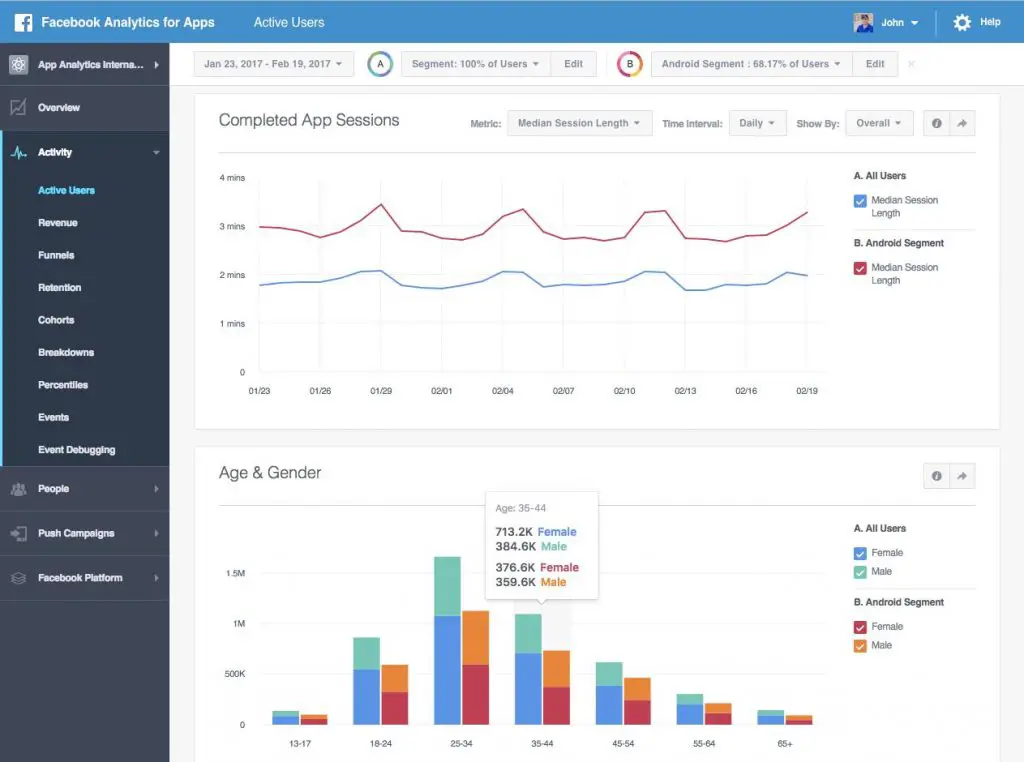Facebook announced this week that its Analytics for Apps tool is now being used by 1 million businesses, websites, apps, and bots. Facebook is also adding new features to the product, for users to get better results.
Facebook’s Analytics for Apps is a useful tool to better understand, measure and optimise customer experiences and online products. Understanding how people interact with a business on its various online properties really is a driving force behind growth. And Analytics for Apps is working very well for businesses.
In a blog post this week, Facebook Engineer, John Connuck announced that there are currently over 1 million businesses, websites, apps, and bots using Analytics for Apps. This is why Facebook continues to develop the product with some brand new features as well – cross-platform metrics, and analytics for businesses building Messenger bots.
As Connuck explained:
[quote]Today, we’re introducing two new ways to help product managers, marketers, and developers more easily discover insights in Analytics for Apps, including [the] ability to compare data for two customer segments side-by-side [and] support for domain-level reporting.[/quote]
Facebook Analytics for Apps now lets you create customer segments based on a number of specific attributes, and easily compare performance between them. Segmentation based on attributes such as “country, type of device used, demographics” and others, makes it easy for businesses to filter their funnels and cohorts, and understand how different audiences react to them.

The new feature includes side-by-side segment comparisons with “active users, revenue, and events.” Connuck provided a good example of how this might be used effectively:
[quote]an e-commerce business can use side-by-side comparisons to answer questions such as how many people are viewing their store’s weekly specials in their native iOS app vs. on their mobile website. [/quote]
Another new feature is the ability to find out where customers are coming from. With cross-platform analytics, businesses were able to get a much more complete “picture of customer behavior across their desktop and mobile websites, in addition to their native apps.” Now, this feature has been expanded, and support for referring domains has been added. This makes it a lot easier for businesses to find out the best referring domains – essentially, the websites that are helping drive more people to their own online properties.

The update now allows the business to build breakdowns of events depending on the referring domain. Referring domains can also be added as a “condition when building a customer segment to filter your reports.”
Again, Connuck offered an example:
[quote]that same e-commerce business can dig further into their mobile website performance to understand exactly which websites are referring the most people to their weekly specials page. […] A segment can then be created of customers from these top referring websites to provide visibility into how this group progressed through their mobile website’s purchase flow.[/quote]
To get started with Analytics for Apps, you can visit the quickstart guide for step-by-step instructions.
[box]Read more: Facebook’s Analytics For Apps Gets Customizable Time Zones And More[/box]
Images: Facebook Analytics for Apps
